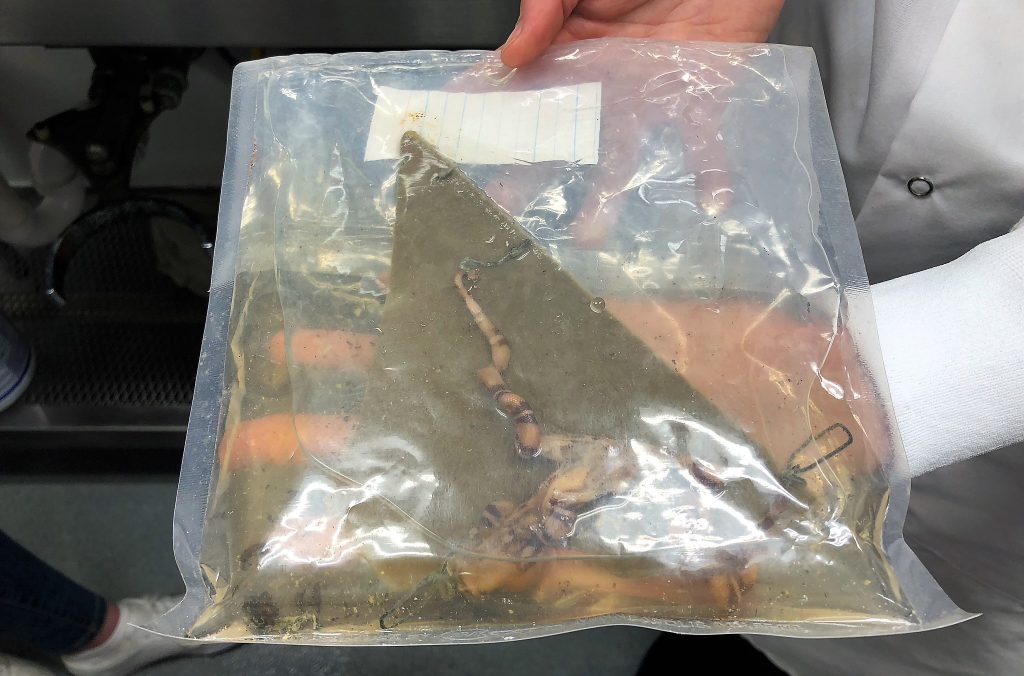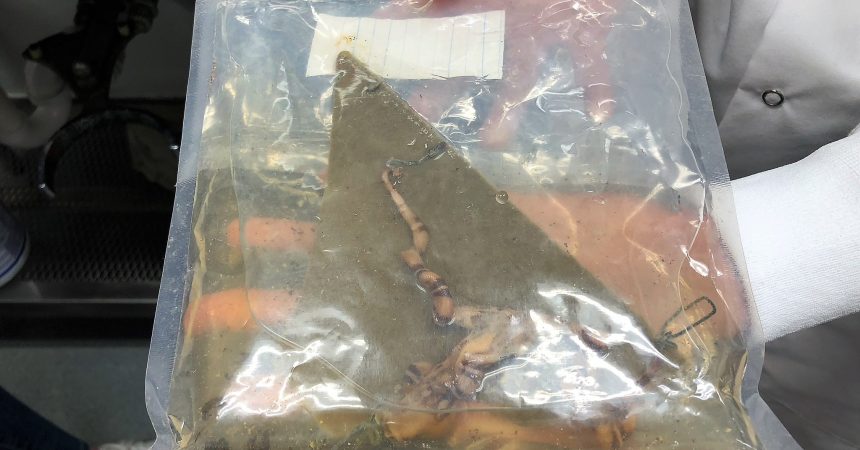Zoo InternQuest is a seven-week career exploration program for San Diego County high school juniors and seniors. Students have the unique opportunity to meet professionals working for the San Diego Zoo, Safari Park, and Institute for Conservation Research, learn about their jobs, and then blog about their experience online. Follow their adventures here on the Zoo’s website!
 All animals serve a purpose, whether they are alive or dead. For the latter, a necropsy, which is an autopsy performed on an animal, helps pathologists determine why the animal died and if it is cause for concern. On Wednesday, we met Dr. Wesley Siniard, a Veterinary Pathologist, who is currently taking part in a residency program at the Zoo. Veterinary Pathology is part of a sub-specialty of veterinary medicine that focuses on identifying diseases in non-domesticated animals and their cause of death.
All animals serve a purpose, whether they are alive or dead. For the latter, a necropsy, which is an autopsy performed on an animal, helps pathologists determine why the animal died and if it is cause for concern. On Wednesday, we met Dr. Wesley Siniard, a Veterinary Pathologist, who is currently taking part in a residency program at the Zoo. Veterinary Pathology is part of a sub-specialty of veterinary medicine that focuses on identifying diseases in non-domesticated animals and their cause of death.
Veterinary pathology is split into two groups: anatomical and clinical. Anatomical pathology focuses on diseases and disease processes, and looks at the whole animal and their tissues. Clinical pathology focuses on figuring out how the animal died, and looks at their cells on slides under a microscope. Slides, which are Dr. Siniard’s favorite part of her work, involve cutting tissue samples into extremely thin pieces and putting them under a microscope. From there, lesions, or abnormalities, can be looked at in detail and identified. Veterinary pathologists are responsible for discovering how medicines affect animals, reporting new diseases and treatments, and collaborating with other institutions.
Her journey began in Florida, where she spent her days outside amongst nature. Oddly enough and much to her mother’s dismay, playing with dead things was her favorite pastime. Her fascination with the inner workings of animals and finding the reasons that caused their demise stuck with her well into her adult life. This influenced the path she confidently decided to begin, and she has never thought about pursuing a different field of study. Dr. Siniard attended the University of Tennessee for both undergraduate and veterinary school with a major in Animal Science and a minor in Biology. As an undergrad, she focused on large animals such as horses and other hoofstock, while sticking close to marine biology. An adventure in Florida allowed her to work with turtles in a wildlife rehabilitation center, and she was involved in numerous internships, including one focusing on goats, back in Tennessee. The next step involved leaving the east coast for the west, attending the University of California, Davis, for her Veterinary Pathologist Residency. There, she worked alongside a small group of other veterinary students and pathologists before venturing down to San Diego.
During our time with Dr. Siniard, we were shown the organs of a deceased rabbit and squirrel, as well as deceased snake specimens, pieces of an elephant’s foot, and pennies found in the stomachs of birds. She showed us that working with dead animals isn’t as disgusting as some people make it out to be, and it holds many opportunities for learning and research. Her ultimate goal is to apply her findings to conservation, saving animals from untimely deaths and keeping them healthy for as long as possible.
While veterinary pathology might not be as demanding as other fields in veterinary medicine, considering the specimens pathologists work with are dead, with only 25 total pathologists in the United States, collaboration is her key to success. Given that there aren’t too many zoo-based pathologists, when Dr. Siniard comes across something new, she is often starting from scratch. In veterinary pathology, most findings are not as well researched as they would be in other fields, so most pathologists rely on one another as sources of information.
In facilities that can afford it, every animal, including native wild animals that die on Zoo grounds, go through a necropsy. This is to ensure that harmful pathogens do not spread amongst the Zoo’s collection. In order to protect themselves from potentially harmful zoonotic diseases, which are pathogens that can be transmitted from animals to people, pathologists keep a clean workspace and wear gloves and masks.
Currently, Dr. Siniard is undergoing her residency in veterinary pathology, which she will continue with until the summer. Once she passes her final board exam, she will receive a board certification by the American College of Veterinary Pathologists, and will continue to work alongside the few pathologists in the nation. This small, but growing, field is contributing to the global effort of increasing the knowledge base of animal health worldwide to boost their quality of life for years to come.
Jennah, Career Team
Week Four, Fall Session 2018


